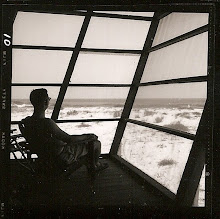
 Jack Marshall's portraits still amaze me.
Jack Marshall's portraits still amaze me.There is a way that some artists connect with their subjects and show you something special about that person. I believe my father had that gift.
While Dad idolized the breathtaking landscape photography of Ansel Adams – and even did his best to emulate his remarkable vision of life in the West – I remember as a child hearing another unusual sounding name spoken with respect and admiration in the Marshall house. That name was Yousuf Karsh, the Canada-based photographer known for his stunning portraits of almost every important person who lived in the 20th century. Karsh made perhaps the most famous photograph ever, this portrait of Winston Churchill.
In my initial post to The Jack Marshall Collection™ Blog, published last July, I explained my father's methodology for taking his portraits. It was simple. There were no sophisticated lights, or backdrops, or props. But somehow, with each person who sat down in front of his ever present Rolleiflex camera, Dad developed a trust which allowed that person to reveal themselves. Over the years, my father took portraits of family members, friends and neighbors, priests and nuns, girlfriends, boyfriends and spouses, actors, models, athletes, businessmen, politicians, the very young and the very old. As far as I know, he had no preference, and he approached each sitting with a single minded passion to understand and capture the essence of his subject.
Many of those portraits, including all those shown here (except for the crazy one of a very young me), are of people whose names even today I am uncertain. (If you are one of these people, or if you know for sure who they are, please let me know, and I will update the records).
 Of the approximately 10,000 black-and-white images that I am organizing into The Jack Marshall Collection™, I would guess that maybe one-fourth are portraits.
Of the approximately 10,000 black-and-white images that I am organizing into The Jack Marshall Collection™, I would guess that maybe one-fourth are portraits.My father's love of portraiture was obvious and long lasting. Some of the earliest photos I can find in Dad's archives are portraits, as are some of the very last photos he took before he died. To my knowledge, he was rarely if ever paid to take someone's portrait. He did it because ... that's what he did. There was something very special to Dad about being allowed to take the portrait of a fellow human being.
Most of the portraits were taken in our living room. The majority are quite good and a few are pure magic. I bet many of Dad's prints from those sessions are still hanging in homes in Shreveport and across the country, representing to the subjects a special, wonderful moment in their life when Jack Marshall took their portrait.
(To see more Jack Marshall portraits, please go to the Galleries page of The Jack Marshall Collection™ web site. I will continue to add additional images in the coming months.)
As times and styles evolved, so did his willingness to experiment with different cameras and settings. In work from his later years, I see more examples of what came to be known as "environmental portraits," where the subject was captured in a more natural setting, such as an office, or outdoors, or doing something other than merely posing for the photographer and looking into the camera. For me, though, Jack Marshall's enduring contribution to portraiture is best demonstrated by those simple, beautiful, black-and-white images he composed in those quiet, one-on-one sessions in our living room.
Now, more than 33 years after Dad took his last photograph, his subjects stare out at me, unblinking across the decades. As all people do, Jack Marshall finally reached the end of his time on earth. But he left for us hundreds of remarkable moments, images of pure humanity that will live forever.

– Tom Marshall, New York City



No comments:
Post a Comment